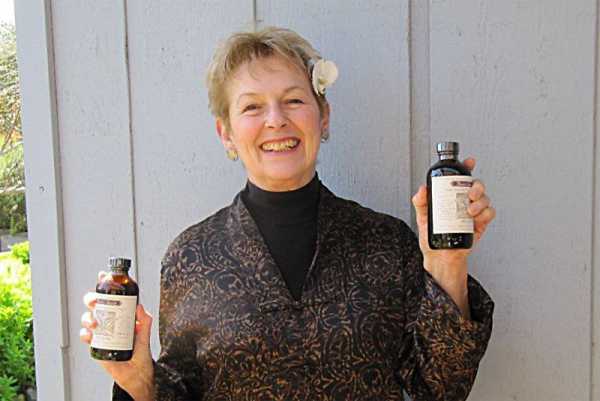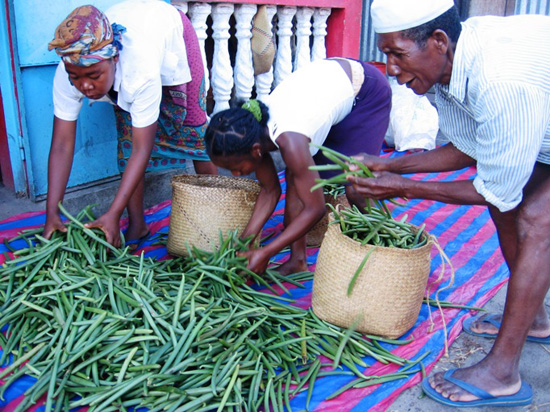
I'm amazed at how superior your vanilla is!
– Des, The Grommet
It is not the strongest of the species that survives, nor the most intelligent that survives. It is the one that is most adaptable to change. Attributed to Charles Darwin
If you’ve traveled to Costa Rica, you’ve experienced its beauty and the many ways to enjoy all it offers. A small, narrow country angled between Nicaragua and Panama, it is bordered on the east by the Atlantic Ocean; on the west, the Pacific. It has a high literacy rate, no military, is politically stable and welcomes tourists to enjoy its warm, tropical weather, outdoor activities and eco-tourism.
Thirty-five years ago, however, Costa Rica was very different, especially outside the urban cities and tourist attractions. Except for the main highways and big city streets, roads were unpaved, and often impassable during the wet season. Homes were simple, with no running water or electricity. Water was hauled from wells and wood warmed the houses and fueled the stoves in the cloud forests where the weather is often windy and cold. Families were large and very poor. Boys worked with the men and girls cared for their siblings and worked with the women. Girls had less education than the boys, attending school for only a year or two. This is how it was when Patricia Jimenez arrived in Monte Verde with her husband and six month old baby in 1978.
Arriving in the wilderness
Patricia came from San Jose. She had polio as a child. Her father told her she must get an education as no man would marry her, especially if she couldn’t have children. She went to college then worked for the Bank of Costa Rica. She happily recounted how her family was very surprised that she indeed did marry and even gave birth, “thanks to modern medicine.”
Her husband suggested that they move from the city to a family home in Santa Elena, Monte Verde, nearly 6000 feet up in the beautiful Tilaran cordillera. When they first visited the region, Patricia was shocked to learn there were no buses or taxis and the house was six miles outside the small local town. While Patricia could walk without crutches at that time, walking six miles each way wasn’t possible. Her response to moving? An emphatic “no!” After her son was born but no time off from work to care for him, she agreed to move to Monte Verde.
For a city girl with a disability, rural life was a huge adjustment. In the Valley of San Jose nearly everyone was educated. Here in the mountains there was only a one-room schoolhouse in Santa Elena, and only some of the local adults had attended school. And, as there were no phones, she couldn’t even talk to her family back home in San Jose.
Connecting with local women
Patricia soon realized the local women desperately needed coats so she and her husband started a small store filled with used clothing from the city. In addition to affordable clothing, the store helped her develop friendships with the women. Patricia saw an opportunity that would ultimately change the community in ways she couldn’t have imagined at the time.
The idea was to start a small night school where the women could learn to read and write. The women were very excited but their husbands were adamantly opposed. At this time boys were raised to believe that they owned the women they married. Women were meant to raise children, cook, do housework and care for the farm animals and gardens. Women could only leave home under special circumstances dictated by the men. Domestic violence was common. One woman after another withdrew from the school over a period of a year, as their husbands would not allow it.
Creating crafts for tourists
Although she was disappointed, Patricia didn’t give up. She encouraged the women to create artisanal work like embroidery and painting to earn their own money. Tourists were trickling into the region to see the exotic birds and animals and hike through the pristine forests, and they wanted mementos to bring home. The group met on weekday afternoons.
The women told their husbands they were going to mass or visiting a family member in town, acceptable reasons for leaving home. A sympathetic milkman gave women rides to and from town in the back of his truck bed filled with wooden boxes and milk cans. Some women knew how to embroider. Patricia provided additional skills and encouragement. A Quaker woman helped the women document and produce the first regional book on birds.
CASEM COOP is born
The late Dr. Jean Andrews, an artist and academic, visited the region in 1983, learned about the women and became their “angel.” She sent the women sewing machines, tools, fabric, yarn and art supplies donated by friends and colleagues. In 1984 an American artist taught the women additional skills. She also suggested that they name their coop. They chose CASEM COOP.
By now the women had outgrown the small space where they worked so they decided to build a store. With $3000 donated by Dr. Andrews and the small stashes of money saved by the women, they had enough to start construction, but they didn’t have enough money to finish the building so Patricia and Nery secured a bank loan to complete their store. The husbands knew nothing about their project.
When the building was ready, they decided to hold a fair. They made food from the crops they grew and chickens they raised. They invited Jean Andrews to come to the fair and posted notices on bulletin boards in town. And, they invited their husbands and families to attend.
They thought possibly 50 people would show up. In fact, more than 400 people came from miles around! Jean Andrews spoke and she and the oldest women in the coop cut the ribbon. Their crafts filled the two-room building and tables were laden with food and beverages.
The husbands were stunned that their wives made such fine crafts, created a coop, and built a store. Even more, they were successful! A few of the women’s husbands were still opposed to their wive’s membership in the cooperative, so their children and grandchildren interceded and eventually they too gave in as they realized it was good for the entire family.
CASEM COOP is a success on many levels
By the early 1990’s tourism was booming. Small bakeries and restaurants opened, drawing ever more tourists to the coop. The entire region supported the coop and the courageous, unstoppable members. The most beautiful outcome was that the women gained so much along the way. Some learned to read and write, they supported one another and forged deep bonds, and they gained both self esteem and greater level of independence.
Dining comes to CASEM
By 2011 some of the members could no longer sew or embroider, so the group decided it was time to start a restaurant. An additional room was added to the store. The older women could now make cajeta and other desserts to sell. A mother-daughter team prepare traditional breakfasts and lunches on a wood burning stove and beverages from seasonal fruits. Meals are delicious and very affordable.
I ate at CASEM when I arrived in Santa Elena in March. The following morning I met Nery Gomez Mendoza who manages all aspects of the coop as a paid employee. Born, raised and educated in Guanacaste, she became a member of CASEM in 1983 when she married a local man. She became the manager and spokeswoman when the store was built and has helped it flourish. There are currently 84 members in the coop, including five men! Nery explained that a drop in coffee production meant local men needed an additional source of income. They make hand turned wooden bowls and trays from tropical hardwoods that fell during storms. Members can purchase materials and supplies from the coop at cost. They receive 75% of the money earned from their work. The balance pays the upkeep of the store and salaries for the employees.
Learning the story
Nery told me the story of CASEM for more than an hour while we waited for a busload of senior tourists to arrive. It turned out the tourists were from France and only a few spoke Spanish so Nery cancelled her presentation, but was instantly busy as everyone wanted gifts to bring home. There were only two women and a boy cooking and serving food, so I pitched in and served dessert, coffee and beverages, bused tables and stacked mountains of dirty dishes. It was a treat to work alongside the local women and experience their dedication and energy firsthand.
Stories like this demonstrate the strength and determination of men and women willing to reinvent themselves and to embrace the changes that have occurred in the region they passionately love over the last 25 years. I have no doubt that CASEM will continue to evolve and grow, hopefully for generations to come.
Get Involved
For more information about CASEM COOP, visit http://www.casemcoop.org or email Nery Gonzalez at casemcr@yahoo.com. (Yes, they now have Internet access though most of the roads are still unpaved!) They sell an exceptional documentary film, “The Muse is the Mountain,” written and directed by Dr. Teresa Mular. In Spanish with English subtitles, it interweaves the women sharing their stories and their art with the the people, the plants and the birds and animals that inspire them and are reflected in the work they produce. It is deeply moving to observe the women, some now elderly, some whose daughters are now coop members, as they speak emotionally about how CASEM changed their lives and the lives of the entire Monte Verde community.
If this story has inspired you, please purchase a copy of “The Muse is the Mountain” and share it with friends and family. It costs about $15. It costs about $15 and credit cards are accepted. Doing so will help CASEM COOP to continue all it does to maintain a solid community and relationships throughout the Monte Verde region.
I was given a small bottle of Rain’s Choice in a gift basket and I have been hooked ever since. The flavor makes all of my baking so much better! I will never use grocery store vanilla again!


© 2021. All Rights Reserved
Designed/Developed by Kat & Mouse